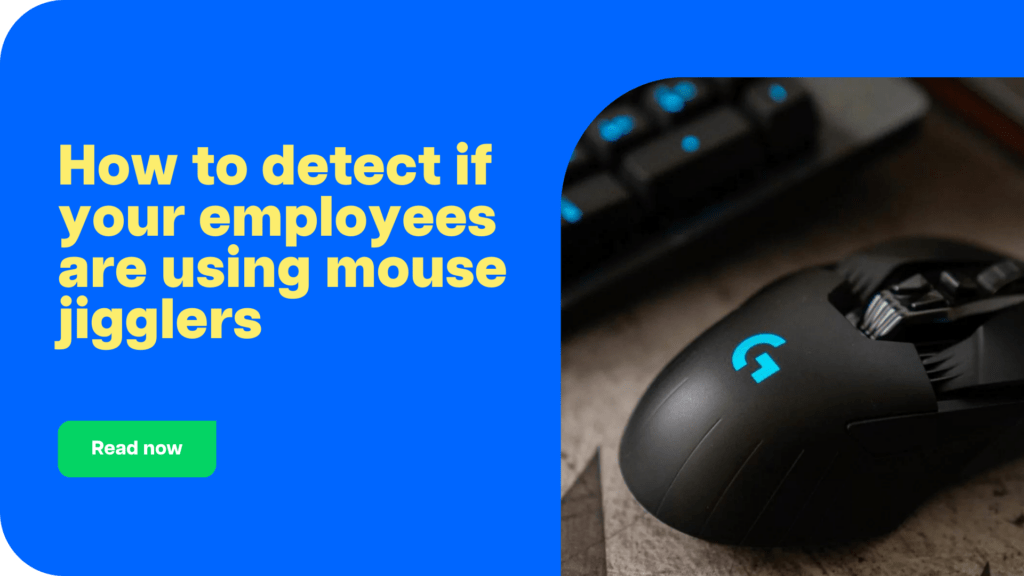In a world where remote work has become the norm, trust and accountability are the cornerstones of productivity. Tools like Time Doctor help build that trust by offering transparent and accurate insights into employee performance. But as technology advances, so do the methods people use to try and cheat the system. Enter Lazywork—a tool designed to simulate activity and trick monitoring software into thinking you’re working when you’re not. However, Lazywork meets its match with Time Doctor.
In this blog post, we’ll take a look at why Lazywork fails to cheat Time Doctor and what you need to know about ethical monitoring in the workplace.

Introduction to Lazywork and its purpose
Lazywork is marketed as a tool that helps users simulate productivity, tricking monitoring software into thinking someone is actively working. It promises to automate things like mouse movements and keyboard activity to make it seem like the user is constantly engaged.
But let’s be clear: tools like Lazywork are designed to game the system and aren’t helpful in building trust or real productivity. They might sound appealing at first glance, especially if you’re under pressure to look busy. But in reality, they cause more harm than good.
Understanding Time Doctor’s advanced monitoring features
Time Doctor is more than just a simple activity tracker. It’s designed to monitor real productivity while maintaining a transparent and ethical environment for both employees and employers.
Here’s what sets Time Doctor apart:
- Time tracking: Time Doctor doesn’t just track mouse movements and keyboard strokes. It tracks how long an employee spends on different tasks and software, offering a comprehensive view of their workday.
- Idle time detection: Time Doctor flags when a user hasn’t been active for a certain amount of time, showing periods of inactivity. This ensures that people aren’t gaming the system by just keeping their computer on.
- Screenshot monitoring: Employers can opt to take periodic screenshots to see if employees are working on the correct projects. This is an optional feature that ensures transparency.
By combining these elements, Time Doctor ensures that it’s looking at the complete picture, not just surface-level activity like mouse movements.

Why Lazywork can’t fool Time Doctor’s algorithms
Lazywork attempts to mimic computer activity, but it doesn’t stand a chance against Time Doctor’s advanced algorithms. Here’s why:
- Detection of idle time: Lazywork might move your mouse or simulate typing, but Time Doctor goes deeper. If the software detects a lack of actual work, such as browsing unrelated websites or long periods of inactivity, it flags it. Simple tricks like mouse movement don’t contribute to legitimate productivity.
- Unnatural activity patterns: Tools like Lazywork can’t replicate the natural ebb and flow of real human activity. Time Doctor’s algorithms analyze patterns over time, so fake, mechanical movements are easy to spot. Continuous, unrealistic activity doesn’t go unnoticed.
In short, Time Doctor can differentiate between genuine work and automated cheats like Lazywork. Its monitoring features are designed to catch subtle signs that indicate someone isn’t actually working.
The risks of using tools like lazywork
While trying to cheat a system like Time Doctor might seem harmless, it can lead to serious consequences, both professionally and ethically.
- Trust erosion: Once an employer detects that someone is using a tool like Lazywork, trust is eroded. Trust is a cornerstone of any remote work relationship. Using these tricks damages that trust, leading to more invasive monitoring and stricter controls.
- Professional consequences: Many employees have faced disciplinary actions or even termination for trying to game monitoring systems. The consequences aren’t worth the risk, and it’s always better to be transparent about your workday.
Employers rely on tools like Time Doctor not to punish employees but to ensure accountability and improve team performance. Using cheats like Lazywork only hinders your progress and reputation.
Time Doctor’s focus on real productivity, not fake activity
Unlike tools that simply track how long a mouse has been moving or keys have been typed, Time Doctor goes deeper by focusing on actual results. It tracks how long employees spend on specific tasks, helping employers understand what work is truly getting done.
This also benefits employees who are genuinely productive. Time Doctor encourages work-life balance and transparency, which leads to improved trust and job satisfaction. It ensures that people who are doing real work get the recognition they deserve, and those who try to fake it are easily spotted.
How Time Doctor protects employers and employees
Time Doctor isn’t just about monitoring—it’s about providing a fair and accurate representation of both employees’ work habits and productivity levels. The software helps in several key areas:
- Transparency: By offering clear reports and time logs, Time Doctor ensures that both employees and employers know where time is being spent.
- Security: Time Doctor’s security features protect sensitive data while ensuring that time-tracking is accurate.
- Legal compliance: In some industries, keeping an accurate record of work time is a legal requirement. Time Doctor helps companies comply with these regulations while ensuring employees are treated fairly.
This level of transparency benefits everyone, ensuring that no one is unfairly punished or rewarded based on inaccurate data.
Conclusion
The future of work is remote, and the tools we use to monitor productivity are evolving. Time Doctor is a prime example of a system that supports both employees and employers, ensuring that productivity is measured fairly and accurately.
Tools like Lazywork may try to trick these systems, but they ultimately fail. In the long run, it’s far better to focus on real productivity than to waste time trying to cheat monitoring software. Transparency, accountability, and trust are the pillars of success in today’s remote work environment.
FAQs about Time Doctor vs. Lazywork
Q: What happens if an employee tries to use Lazywork with Time Doctor?
A: Time Doctor will flag unnatural activity patterns and detect when real work isn’t being done, rendering Lazywork ineffective.
Q: Can Time Doctor detect mouse-movement simulation?
A: Yes, Time Doctor’s algorithms can detect when mouse movements are artificial and not aligned with actual productive work.
Q: How does Time Doctor ensure that remote teams remain productive?
A: By offering features like time tracking, idle time detection, and detailed reports, Time Doctor provides an accurate view of productivity without relying on superficial activity indicators.

Liam Martin is a serial entrepreneur, co-founder of Time Doctor, Staff.com, and the Running Remote Conference, and author of the Wall Street Journal bestseller, “Running Remote.” He advocates for remote work and helps businesses optimize their remote teams.


